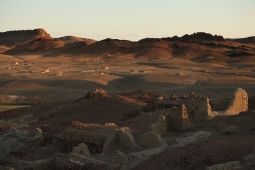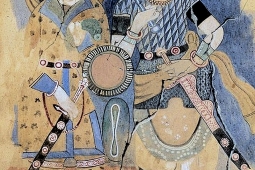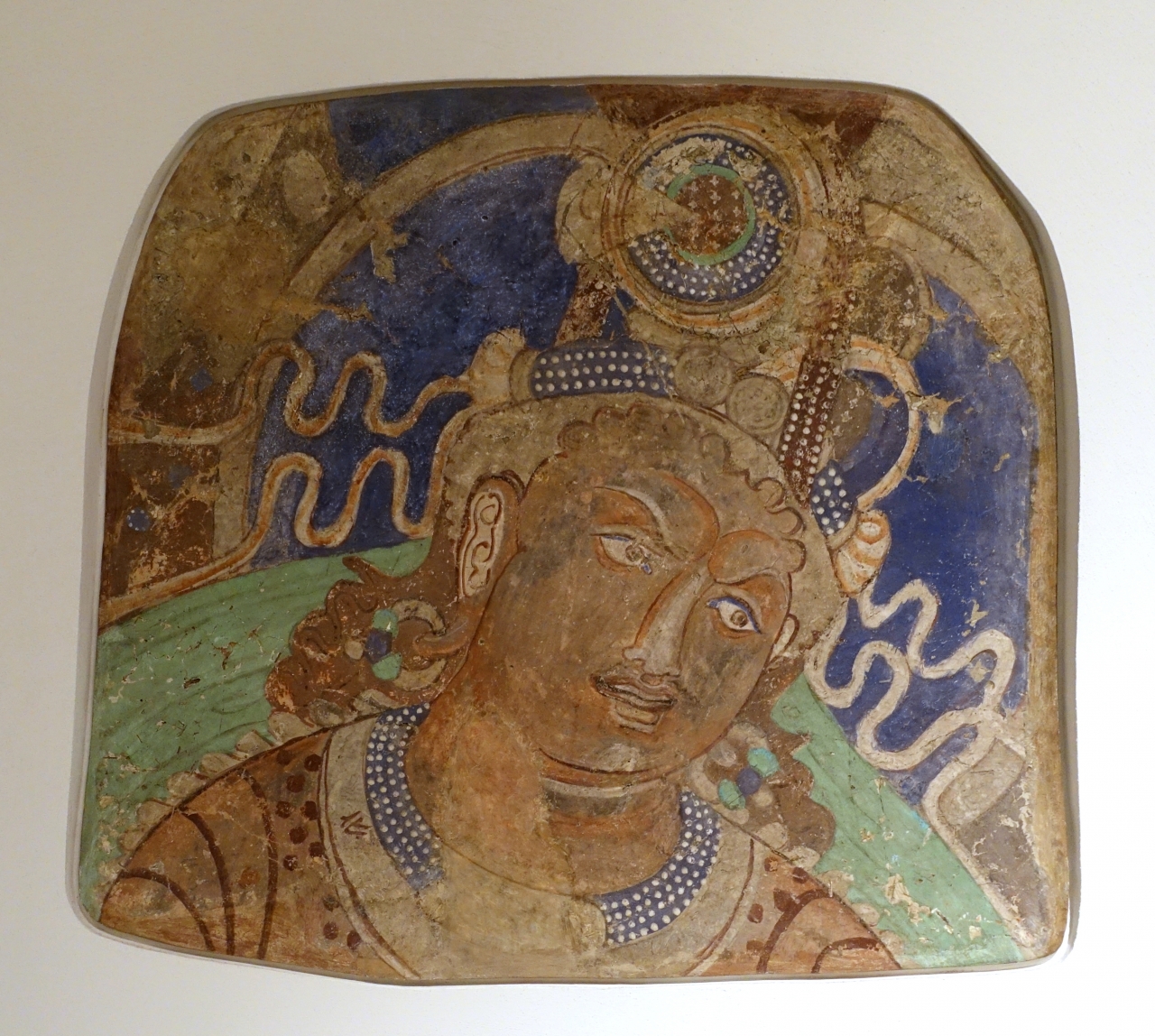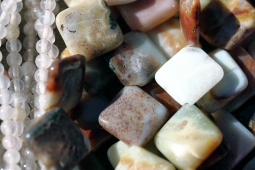Cultural Selection: The Kizil Cave Murals and the Silk Roads Transmission of Buddhism and Central Asian Art
© Michael Gunther CC BY-SA 4.0The Kizil caves are a large complex of rock cut Buddhist caves located on the northern bank of the Muzart River in Xinjiang, China. This area has historically been a thriving commercial hub on the Silk Roads and the extent of the interactions which took place here is reflected in the various artistic influences apparent in the cave’s many murals decorating the inside walls. The murals, and the scenes depicted on them, have been important resources for tracing the development of Central Asian art as well as evidence for the role of the Silk Roads in the transmission of Buddhism. The site itself, which is thought to be the earliest Buddhist cave complex in China, contains around 339 caves the earliest of which date from around 300 CE with ongoing development up until the 8th century CE. As well as depicting religious themes such as scenes from the life of the Buddha, the caves also depict day-to-day scenes from life along the Silk Roads including figures of merchants, travellers, monks, musicians, and farmers.
The caves were first established in what was then the Kingdom of Kucha, the most populous oasis in the Tarim Basin in modern day North West China. The region occupied a strategic position on the Northern Silk Road making it home to wealthy centres of trade and cultural exchange in contact with many parts of Eurasia, including Sogdiana, Bactria, the coastal regions of China, the Iranian Plateau, and the Indian Subcontinent. Beginning in the 2nd century CE Buddhist missionaries began to travel across the Tarim Basin on their way to China their movement precipitating a great flourishing of Buddhism aided by the translation of Buddhist texts into local languages including Sanskrit by renowned translators such as Kumarajiva (344 – 413 CE). These holy sites acted as a focus for worship and as such would draw pilgrims and monks from far and wide. In addition, they were also frequently visited by merchants and travellers resting on their often dangerous journeys and sometimes even using caves as banks and warehouses. This made Buddhist caves in general important centres of exchange for many concrete elements of tangible culture forming vital stopping off points along the routes of the Silk Roads and drawing diverse groups of people from across Eurasia.
One of the most notable features of the Kizil cave murals is the widespread use of blue pigments, such as ultramarine, derived from lapis lazuli most likely imported from Afghanistan. Furthermore, the artistic styles reflected in the paintings can be categorised into three different types, the ‘early’ Indo-Iranian style, which incorporated Greco-Indian and Gandharan influences, the ‘later’ Indo-Iranian style, which was more heavily influenced by Sassanian and Sogdian art, and a third style, although much less common and only found in two of the caves, showing influence from Tang China (618 – 907 CE). The early ‘Indo-Iranian’ style of murals date from 300 – 500 CE and are characterised by an extensive use of orange and green hues, with fine and elegant lines. In addition to religious themes these murals depict musicians and dancers. The second ‘later’ Indo-Iranian style is characterised by strong Sogdian and Sasanian influences bought to the region via the flourishing trade with the Iranian Plateau. The influence of the Sogdians was most apparent in the widespread adoption across Central Asia of caftans complete with popular Sogdian textile designs. Additional features characteristic of Sogdian art which appear on the cave murals include the use of animal motifs, especially ducks, contained within pearl medallions. Another characteristic of the second Indo-Iranian style was the use of sharply contrasting blue and green colours, again made possible by the import of various coloured pigments.
In terms of who painted the murals it is often much easier to decipher within the historical record the various patrons or donors rather than the artists themselves. However, one of the paintings in the Kizil cave known as the ‘Cave of the Seafarers’ is signed in Sanskrit as having been painted by “the one from Rome” a painter who is thought to have come from somewhere in the Byzantine empire. In addition, the ‘Cave of the Painters’, one of the early Kizil caves dated to around 500 CE, gets its name from the numerous self-portraits of painters who appear standing to the side of depictions of the Buddha. The painters each hold paint cups and brushes and many of them are accompanied by a label identifying the painter. These murals in particular show a clear influence from the Classical world including Roman style friezes along the top of the walls over scenes of the life of the Buddha.
Buddhist rock cut caves such as those at Kizil are one of the many outstanding legacies of the Silk Roads reflecting both the transmission of religion and artistic influences across Eurasia. Cave sites were often chosen for their natural beauty attracting monks and other followers who would hollow them out and fill them with extravagant statues and mural paintings. These paintings were done in bright colours using pigments exported from along the Silk Roads including lapis lazuli, indigo, and real gold, all traded along these routes. At Kizil, the presence of stylistic elements from Afghanistan, the Iranian Plateau, the Greco-Roman world, and Indian Subcontinent all attest to the artistic influences carried by people moving across the Silk Roads.
See Also

Cross-Cultural Elements Evident in a Steppe Headdress and Earrings
Throughout the history of the Silk Roads, the people occupying the steppe and mountainous regions of Central and East Asia have been known for their high mobility and crucial role in some of the most intense interactions and rich exchanges

Chinese, Sogdian, and Byzantine Influences on Caftans Uncovered from Archaeological Sites along the Silk Roads
A caftan is a variant, or style, of robe which may be made of wool, cashmere, cotton, or silk and often bound with a sash. It can be worn as a coat or overdress down to the ankles, usually with long sleeves.







